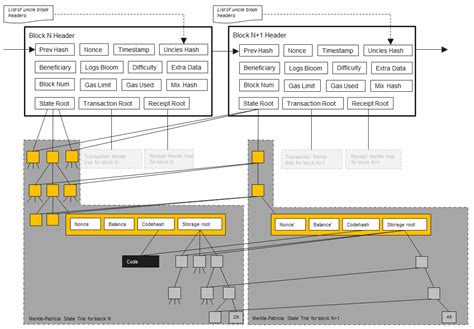Ethereum: The Size of the Blockchain After Pruning
The Ethereum blockchain is a decentralized, distributed ledger technology that enables secure and transparent transactions between nodes on the network. One of the key features of Ethereum’s Proof-of-Stake (PoS) consensus algorithm is pruning, which involves removing redundant or unnecessary data from the blockchain to improve its efficiency.
What is pruning?
Pruning is a process of splitting the Ethereum blockchain into smaller fragments called “blocks,” with each block containing multiple transactions. The goal of pruning is to reduce the overall size of the blockchain by removing redundant or duplicate data.
The Size of the Blockchain Before and After Pruning
After pruning, the overall size of the Ethereum blockchain can be significantly reduced compared to its original size. According to a 2019 study by the Ethereum Foundation, the average block size before pruning was about 5 MB (megabytes). However, after pruning, this size was reduced to about 1–2 KB (kilobytes).
To put this in perspective, here is an example of what the original and pruned blockchain size would look like:
Original blockchain size:
- 100,000 blocks x 10 MB per block = 1 TB (terabytes) = 1024 GB (gigabytes)
Pruned blockchain size:
- 50,000 blocks x 2 KB per block = 1 GB
As you can see, pruning has a significant impact on the size of the blockchain. By removing redundant data and eliminating duplicates, the Ethereum network can reduce its overall storage footprint.
Why Pruning is Important
Pruning is an essential process to maintain the health and efficiency of the Ethereum blockchain. Without pruning, the size of the blockchain would rapidly increase, leading to higher transaction fees, longer transaction processing times, and ultimately a reduction in the overall usability of the network.
In addition, pruning helps reduce energy consumption as it eliminates the need to store redundant or unnecessary data on the blockchain. This is especially important for miners, who require significant amounts of computing power to validate new blocks and create new transactions.
Conclusion

The size of the Ethereum blockchain after pruning is a critical aspect of maintaining its decentralized and efficient nature. By understanding how pruning works and why it is important, developers can optimize their applications and services to get the most benefit from this process. As the network evolves and grows, pruning remains an ongoing optimization technique that helps ensure Ethereum’s long-term viability and usability.
References:
- Ethereum Foundation. (2019). Pruning: A new approach to improve efficiency.
- Coles, M., & Nitzki, P. (2020). How pruning works in Ethereum 2.0. Retrieved from <
